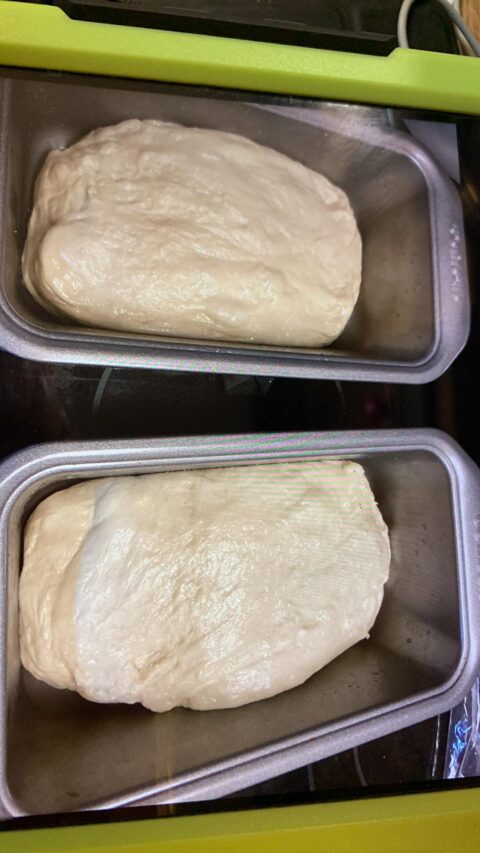
Believe it or not, baking bread can help relieve stress.
Since the day I started cooking as a teenager, I have loved working with yeast. Perhaps you do, too. It’s not difficult, but the yeast needs to be in date or it will result in a useless effort.
In this article, I am going to provide an easy recipe for bread that is not only delicious but will calm and soothe your nerves during the baking process.
My Daddy was a great story teller, probably because most of his stories were totally true. What follows is one of his favorite anecdotes, and one of mine, too. The episode he relates occurred over ninety years ago.
While stationed at Fort Benning, Georgia, Daddy worked in the base bakery part of the time, baking bread and pastries. One day a fellow baker was assembling a recipe for several loaves of bread when he realized he had put in much too much yeast.
Greatly wishing to avoid the trouble he knew would come to him when the boss discovered his mistake, the man rushed outside with the yeast, infused it with a large batch of dough, then threw the huge doughy glob into a big pile of sawdust behind the bakery building.
Hours later, the head baker came storming into the bakery and demanded to be told where that little mountain outside in the sawdust pile came from.
Both my father and the errant baker denied any knowledge of the “little mountain in the sawdust pile” and the head baker never learned the truth.
I suppose bread-baking history could be breath-taking or boring, depending on who’s talking or who’s listening. For the purposes in this article, however, a few remarks will suffice to satisfy our need for knowledge on the subject.
How did those intrepid pioneers of yesteryear manage to produce this life-sustaining loaf? Starting around 1850, they began using a baking kettle, a deep cast iron pan with three legs and a rimmed, close-fitting lid.
Then, in 1856, the bread baking process rose to a new height with the development of a soda-like ingredient made from lye and wood ashes, or baker’s ammonia. Pearlash consisted mainly of potassium carbonate, which produces carbon dioxide quickly and reliably. However, being difficult to make, it was also caustic and smelly. If yeast was being used and it was good, then “a little leaven leaveneth the whole lump.” If the yeast was finicky, then the diner would be forced to devour flat, dense dough.
Then something wonderful happened—baking powder came to be in existence and started to appear in everyone’s cabinet. It simplified a heretofore tedious, onerous undertaking and opened the baking process up to new and easy possibilities.
Happily, for the modern cook, we don’t have to know the complete history of baking to produce a delightful dish. Further we can enjoy working with yeast because we know there is a backup plan in case our first efforts fails.
FOR THIS BREAD YOU WILL NEED:
>. 2 cups warm water (110 degrees)
>. 1/2 cup white sugar
>. 1 1/2 tablespoons active dry yeast
>. 1 1/2 teaspoons salt
>. 1/4 cup vegetable oil
>. 5 to 6 cups flour ( either bread flour or all purpose)
INSTRUCTIONS:
First, I find it essential to put on an apron and some good music. Neil Diamond is encouraging and the right tempo, however, you might want to avoid “Morningside” because it is very sad.
1. Using a large bowl, dissolve 1 TBSP of the sugar in warm water and then stir in yeast. I use my heavy duty Kitchen Aid mixer with the dough hook. The dough hook is your new best friend and will save you a lot of time and hard work. Allow this to proof until the yeast looks like a creamy foam, about 5 minutes.
2. Mix remaining sugar, salt and oil into the yeast. Mix in flour one cup at a time. I have my dough hook running on low speed as I add the flour. Dough will be tacky and clean the sides of the bowl, except a small part at the bottom. If you use too much flour the bread will be dry, so have a little extra warm water in case you need to thin the dough.
3. Knead the dough for 7 minutes. This is what the dough hook does, this is its reason for existing. Let it work for you. Place the dough into a well-oiled plastic or glass bowl, and turn dough to coat. Cover with damp paper towels or cloth, nothing heavy or the bread won’t rise.
Allow it to rise until doubled in size, about 1 hour.
4. Punch down dough. Herein lies the stress relief I promised. Knead for 1 minute and divide in half. Shape into two loaves and place in two greased loaf pans. Allow to rise another 30 minutes, or until the dough is one inch above the pans.
5. Bake at 350 degrees for 30-40 minutes.
Cool, brush with butter or slice and add softened butter and honey.
Thanks for listening……..Keep smiling!
Audrey McCarver. 8-15-2022


